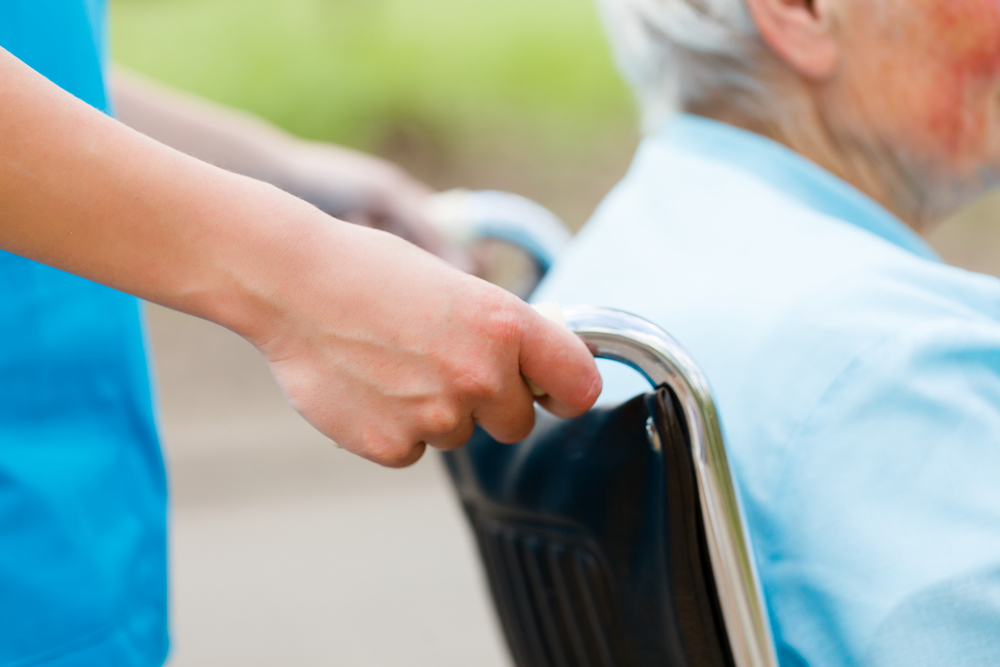The Charlie Norwood VA Medical Center (CNVAMC) Safe Patient Handling and Mobility Program (SPHM) began in 2008 as a Veterans Health Administration initiative to provide a safer environment for staff and patients during patient care activities related to lifting, repositioning, and transferring patients. Our medical center’s commitment to the SPHM program and promoting a culture of safety resulted in an overall decrease in reported staff incident rates by 77.7% in fiscal year 2013 compared to 2008. Ongoing SPHM program evaluations continue to identify future successes and SPHM program improvement opportunities.
Implementation and interprofessional collaboration
While getting started is challenging, the overall results can have a great impact on patient and staff safety. The implementation phase is multifaceted and depends upon interprofessional collaboration from several services and departments. Continuous promotion of a culture of safety is essential to the SPHM program’s success and sustainment. The SPHM program requires commitment and ownership by all. Change is difficult; however, when everyone is working together, a culture of safety can emerge.
The implementation phase includes the following components:
- Leadership support and a designated SPHM coordinator
- Interprofessional collaboration
- Nursing
- Physical therapy
- Imaging/radiology
- Logistics
- Engineering
- Environmental management services
- Occupational health
- Human resources including the workers’ compensation program
- Safety office
- Environment of care committee
- Facility ergonomic assessments
- SPHM policy development and reviews
- Equipment selections and procurements
- Equipment installation and maintenance programs
- Education, knowledge transfer, and patient assessments:
- Initial and annual staff and SPHM unit peer leaders incorporating SPHM algorithms and safety huddles
- Evaluations and monitoring for the SPHM program’s sustainability
- Design recommendations for new construction and renovations
Throughout our journey, we continually evaluate the SPHM program’s effectiveness to identify improvements as the program continues to expand with the addition of the Safe Patient Handling and Mobility: Interprofessional National Standards, released by ANA in 2013. ANA led efforts by an interprofessional working group of nationally recognized safe patient handling and mobility experts to develop the standards.
Implementing the Safe Patient Handling and Mobility: Interprofessional National Standards
The addition of the 2013 Safe Patient Handling and Mobility: Interprofessional National Standards has strengthened our program by incorporating the mobility component. Adding mobility has enhanced awareness of using our SPHM technology to promote progressive mobility for improved patient outcomes related to patient falls, hospital-acquired pressure ulcers, and hospital-acquired pneumonia occurrences. ANA’s national standards also bring awareness and support for sustaining existing SPHM programs. These efforts will continue in reducing staff injuries, improving quality of care, and improving patient and staff satisfaction. Additionally the organization reaps benefits of cost savings related to decreases in workers’ compensation, employee turnover, and the cost related to patient falls and pressure ulcers. The key is forming a partnership with employers and healthcare professionals who work together to promote a culture of safety across the care continuum.
The eight interprofessional national standards are:
- Establish a culture of safety.
- Implement and sustain a Safe Patient Handling and Mobility (SPHM) program.
- Incorporate ergonomic design principles to provide a safe environment of care.
- Select, install, and maintain SPHM technology.
- Establish a system for education, training, and maintaining competence.
- Integrate patient-centered SPHM assessment, plan of care, and use of SPHM technology.
- Include SPHM in reasonable accommodation and post-injury return to work.
- Establish a comprehensive evaluation system.
Experience as SPHM coordinator
What is it like to be a SPHM coordinator? As a SPHM coordinator, sharing our program’s stories of successes and lessons learned is a rewarding experience for me. I enjoy collaborating with our internal and external customers and conducting training for our staff. Implementing, managing, and sustaining a large SPHM program has its challenges related to competing priorities, time commitment, and resource allocation. Each step of the process brings to life the significant benefits and value of SPHM programs in improving overall staff safety and patient outcomes. I am honored to be a SPHM coordinator, which allows me the opportunity to influence changes in creating a safer environment for our patients and staff.
Learn more about SPHM at www.anasphm.org.
Renee Neidhardt is the Safe Patient Handling & Mobility Program facility coordinator and clinical nurse educator at Charlie Norwood VA Medical Center in Augusta, Georgia and a member of ANA.
Selected references
American Nurses Association (ANA). Navigating the new safe patient handling and mobility interprofessional national standards webinar –CE:1 [webinar]. 2014. http://eventcenter.commpartners.com/se/Meetings/Playback.aspx?meeting.id=218810 . Accessed July 30, 2014.
American Nurses Association (ANA). Safe Patient Handling and Mobility: Interprofessional National Standards. Across the Care Continuum. Silver Spring, MD: Nursesbooks.org; 2013.
Gallagher S. Implementation Guide to the Safe Patient Handling and Mobility: Interprofessional National Standards. Silver Spring, MD: Nursesbooks.org; 2013
Veterans Health Administration (VHA), Department of Veterans Affairs (VA). Safe Patient Handling Program and Facility Design. VHA Directive 2010-032. 2010.http://www.va.gov/vhapublications/ViewPublication.asp?pub_ID=2260. Accessed July 30, 2014.
The Facility Guidelines Institute. 2012. Patient Handling and Movement Assessments: A White Paper. http://www.fgiguidelines.org/pdfs/FGI_PHAMA_whitepaper_042810.pdf. Accessed July 30, 2014.


















